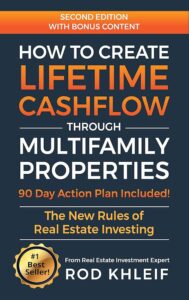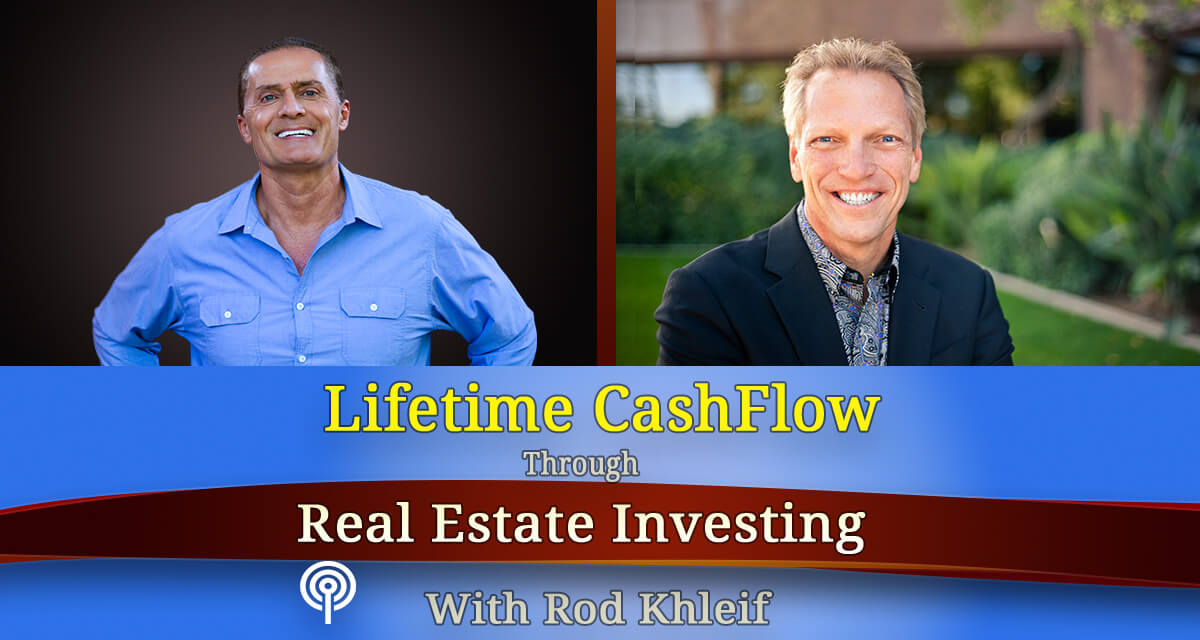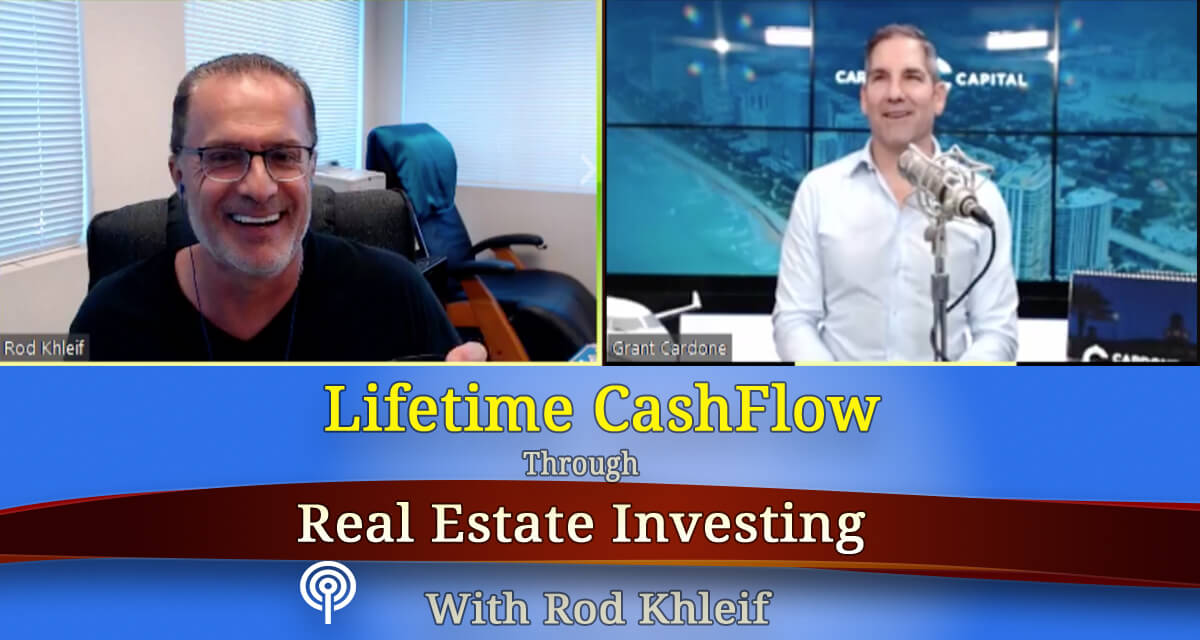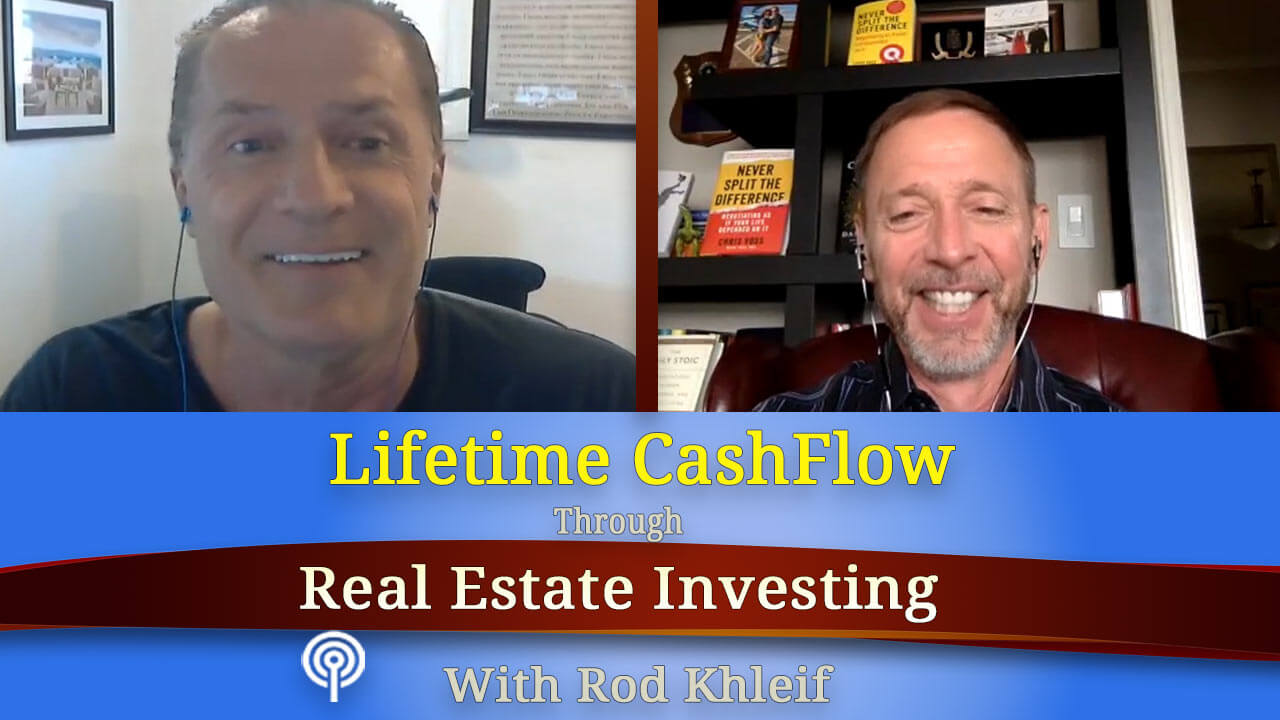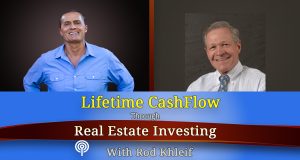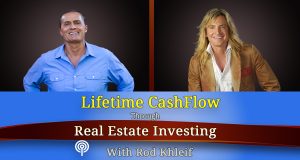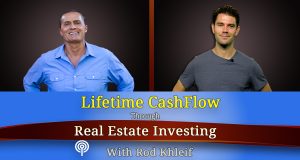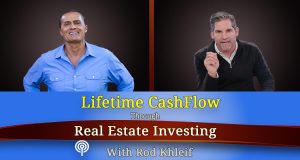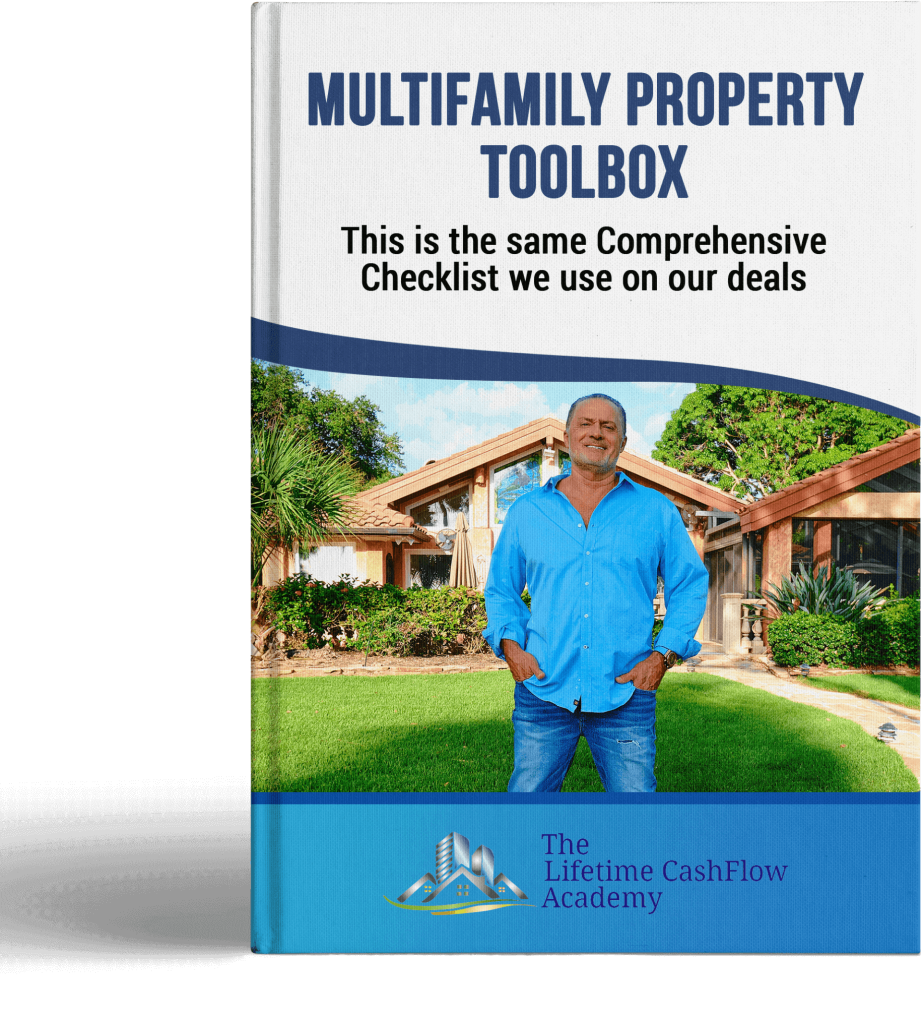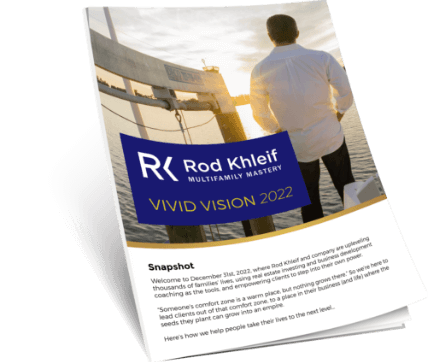In Today’s Episode You’ll Learn
- Unlocking Endless Deal Flow
- Top 3 Secret Sources for Game-Changing Deals
- Prospecting Like a Pro for Unstoppable Deal Flow
- Turbocharge Your Deal Pipeline with Targeted Marketing
- How to Attract More Multifamily Deals to You
- Build a Killer Track Record So Deals Chase You
- Getting Your Multifamily Business Off The Ground
- Double Your Deal Flow
- Scaling Your Messaging to 10x Your Multifamily Growth
Finding Deals Expert Course:
To learn more about Finding Deals, buy our expert course.
How to Build an Unstoppable Acquisitions Pipeline in Multifamily Real Estate
If you want to scale your multifamily investing business, you’ve got to stop thinking about just finding the next deal. Instead, focus on building a deal pipeline—a repeatable, intentional system that consistently puts deals in front of you. Axel Ragnar breaks down the framework every investor needs to master to unlock endless deal flow and grow faster.
Three Core Sources of Deals:
- Prospecting (One-to-One, Trading Time for Leads):
This is where most new investors should start. Prospecting means cold calling, texting, and emailing property owners, brokers, wholesalers, and other deal finders. It’s time-intensive but budget-friendly. Buy targeted lists, get in front of owners, and share your exact deal criteria. This hands-on approach builds your initial pipeline and helps you close your first few deals to establish credibility. - Marketing (One-to-Many, Trading Dollars for Leads):
For those with a marketing budget, direct mail campaigns targeting property owners are the most effective strategy in commercial real estate. Unlike single-family investing, PPC and social ads don’t deliver strong ROI here. Consistency is key—plan for multiple rounds of mail over months or even years. Combine marketing with prospecting to turbocharge your pipeline and start meaningful conversations. - Relationships (Many-to-One, Deals Brought to You):
This is the ultimate goal—becoming a deal magnet where brokers, sellers, and professionals bring you deals because of your reputation and track record. But you can’t skip the first two steps. Build your credibility by closing deals through prospecting and marketing, then invest time in networking and relationship-building to scale your acquisitions.
Key Takeaways for New Investors:
- Don’t wing it. Build a framework with repeatable actions that generate consistent deal flow.
- Focus on prospecting early on to trade your time for leads and build your track record.
- If you have the budget, add direct mail marketing to reach more sellers and investors.
- Understand that multifamily investing is a long game—patience and persistence pay off.
- Once you have deals under your belt, shift more energy into relationships to attract deals passively.
- Always be intentional and strategic about your pipeline to look at hundreds of deals, increasing your chances of buying the right ones.
Remember, this business is about volume and consistency. The more deals you see, the more winners you find. Build your pipeline with purpose, and deals will start chasing you.
Full Podcast Transcript: Ep #1018 – Axel Ragnar on Acquisitions Pipeline for Multifamily and Commercial Real Estate Investors
Acquisitions Pipeline Framework
Axel Ragnar: What’s going on, everybody? Welcome back to another episode here on Lifetime Cash Flow through Real Estate Investing. Again, as you can tell, I am not Rod Khleif. This is Axel Ragnar, and I’m here with another episode regarding acquisitions and finding off market deals. Now, as you’ve probably heard on the podcast feed, over the last couple of months, I’ve been releasing episodes where I discuss how multifamily investors, or really any commercial real estate investors, can build their acquisitions pipeline, find more off market deals, find better deals, and fundamentally grow their business faster.
Axel Ragnar: That’s what I’m trying to do here with these episodes on the podcast feed. And in this episode, I’m going to be talking about how you need to think about building your ideal pipeline. And when I say think about building your deal pipeline, I mean the framework in which you need to think about acquisitions. I think a lot of investors, and I’m probably going to be describing a lot of the folks listening to this episode, don’t really take an intentional approach to building their acquisitions pipeline or fundamentally finding deals in general.
Axel Ragnar: There’s a lot of investors out there. And again, this may describe you that more or less just wing it, right? When they think about finding deals, they’re probably emailing some brokers when they receive a deal and maybe they underwrite the deal. Maybe they email some feedback. Maybe they said, “Hey, could you keep me in mind on the next one? Maybe give me an early crack at it or first look at it?” Something like that. You may be somebody who is going to a meetup without really a lot of intentionality. You go to some here and there – some in person, some online – kind of sharing that you’re a multifamily investor in this area, but there’s really no plan around it, right?
Axel Ragnar: You’re not sitting down and actually looking at the process of building your ideal pipeline through a lens in which you’re building a framework with actions that are repeatable, that you can go back to and actually build a strategy and a plan around. And that’s fundamentally what I’m going to try to do here in this episode: give you the framework in which to think about building your deal pipeline.
Axel Ragnar: And notice that I keep saying deal pipeline. I’m not saying to find a deal, right? Fundamentally, what we are trying to do as multifamily and commercial real estate investors is define the actions that we need to take that generate deal flow; that put deals at the top of the funnel at a higher rate so that we have more deals to underwrite, so that it’s more likely that we buy the next deal, the next five deals, the next ten deals, etc. We are not in the business of thinking about how do we buy a deal or the next deal. We need to think about how do we build our pipeline, because fundamentally, what we are trying to do in this business is look at 20 deals, 100 deals, thousands of deals. And because that’s what we have to do in order to find the ones that make a lot of sense, just to look at hundreds of deals. So how do we put ourselves in a position to look at hundreds of deals?
Axel Ragnar: So first things first, let’s talk about the three places that deals come from, or the three avenues in which deals come into a multifamily investor’s inbox. And again, we’re going to assume direct-to-seller here as well. Step one is prospecting. These are one-to-one actions that an investor takes to generate deal flow, to generate a lead.
Axel Ragnar: So this would include cold calling, cold texting, cold emailing. This could be to a broker, or it could be to a seller or as a broker or any other deal finder—a wholesaler, another investor, etc. These are the actions that we take where we are trading time for leads, right? That’s the other way that I want you to think about this.
Axel Ragnar: What we are fundamentally doing here is going out to the marketplace and contacting individuals and sharing our deal criteria. We’re sharing exactly what we want to buy. We’re asking them if they’ll sell us their deal, if it’s a seller that we’re speaking with. And really, this is time intensive and that’s how we’re actually generating leads. It’s not scalable, fundamentally speaking.
Axel Ragnar: The second avenue in which we’re looking for deals is through marketing. If you’re in the single-family world – which is predominantly not the listener of this podcast – this could be your marketing method, for example, selling direct mail. This could be you paying for PPC ads. Maybe you’re paying for online social ads or some other kind of ads to drive traffic to your landing page, your website. That’s fundamentally not what we’re talking about doing here in commercial real estate. PPC and social ads aren’t really money well spent, fundamentally speaking. What I’m really talking about here, from a marketing standpoint, is direct mail. And this is direct mail that you’re sending to property owners. It could also be direct mail that you’re sending to other investors with whom you want to build a relationship.
Axel Ragnar: But fundamentally, what I’m talking about here is that you are trading dollars for leads. Again, whether it’s prospecting by trading time for leads or marketing by trading dollars for deal flow, the effort can be scaled – whether you’re sending a thousand letters or five thousand letters – assuming you’re not handwriting them and you’re working with a service, but obviously the cost is different. The more dollars you spend going out into the marketplace, the more leads you’ll receive.
Axel Ragnar: The third avenue in which deals come into your business is through relationships. And this is where people bring you deals. Now, these could be brokers, other service professionals, mortgage brokers, deal finders, etc. These could even be sellers coming to you because they are aware of who you are – they heard that you bought Joe’s building down the street and figured, “Hey, let’s go bring him our deal.” When you’re looking to sell, you want to spend as much time as possible developing your deal pipeline so that people bring you deals. Now, it’s much harder to get to that place early on. I think that’s where a lot of investors make the mistake as they try to become a deal magnet before they have a reputation, credibility, or a demonstrated track record. Frankly speaking, your time is going to be better spent developing your track record and then executing on the actions that bring you deals and turn you into an omnipresent figure in your marketplace – a deal magnet.
Axel Ragnar: To recap, the three places that deals come from are: prospecting – one-to-one (trading time for leads), marketing – one-to-many (trading dollars for leads), and relationships – many-to-one. That’s where most investors find themselves after being in the business for a long period of time and doing a lot of transactions. And that’s where this game gets really easy; when a lot of people start bringing you deals, you don’t have to grind as hard to find the next one and to build your pipeline. So let’s go back to prospecting again.
Axel Ragnar: The actions that we want to take here include calling, texting, and emailing – whether it’s to sellers on your list or to brokers or professionals. If you are new to the business, this is where you should be spending the bulk of your time. You should not expect people to be bringing you deals because, why would they? You don’t have a track record, you don’t have reputation in the marketplace, and you don’t have the credibility or the demonstrated ability to close. So it’s going to be much harder for you to rely on other people to bring you deals until you’ve built that.
Axel Ragnar: So when you’re in the prospecting phase, you should be going out there. You should be buying a list of properties in your target market within the criteria that you want to pursue. You should be calling them, texting them, and emailing the owners. I’m not going to spend a lot of time in this episode on skip tracing, etc., because I’ve done plenty of episodes on that already on this feed, and you can listen to them if you scroll back 30 or 45 days. When you’re getting your business off the ground – whether it’s your first one, two, three, or four deals, depending on the size of the deals you’re doing – if you’re doing much larger deals, it only takes a couple to really build a track record. If you’re doing smaller deals, you should be able to get a few direct-to-seller deals that give you a good story to tell other folks. Again, this will set you up for the next phase: relationships.
Axel Ragnar: Now, number two – let’s talk about marketing. Assuming that you’re going direct to the seller, you should probably start with prospecting because it’s more budget friendly. But if you have cash that you’re willing to burn and you already understand the power of consistency – because you can’t just send one round of direct mail and expect to close deals – you need to understand that this is a long sales cycle when you’re buying multifamily or commercial real estate. You must have the patience and foresight to plan five, six, or seven rounds of mail, likely every quarter, even if it takes you a year and a half to see results.
Axel Ragnar: But if you do have the budget attached to that and you are ready, willing, and able to spend those funds – let’s say you have $5,000 to spend on marketing – and you’re going to target a list of about a thousand properties with five rounds of mail, that’s going to put you in a position to have conversations that build your pipeline. If you’re someone without the budget, then you really need to spend more time on the prospecting components of the acquisitions framework. If you do have a budget and time, then do some prospecting in addition to running direct mail campaigns; that’s when you’ll really start to see results from a direct-to-seller standpoint.
Axel Ragnar: For example, you might send out your mail on the first of the month, and by the seventh it hits the mailboxes. Then between the 10th and the 15th, you’re sending follow-up emails and making calls that reference your direct mail. Again, if you’re new and haven’t closed deals yet, you probably won’t get many deals from brokers. So you need to spend your time prospecting and marketing directly to sellers so you can get some deals under your belt and then more effectively tell your story when you start talking to brokers or other deal finders.
Axel Ragnar: Now, number three: relationships. This many-to-one approach is where most investors ultimately want to be because it’s the most scalable way to get deals. But to build these relationships, you need a track record. It’s a chicken-or-the-egg situation. How can you get brokers to send you deals if they see you haven’t closed any yet? That means you need to go back to prospecting and marketing – trade time for leads and dollars for leads – until you’ve done a few deals, and then you can start pouring more time into developing your presence in the marketplace.
Axel Ragnar: To recap, deals come from three sources: prospecting (one-to-one), marketing (one-to-many), and relationships (many-to-one). As a new investor, you need to follow this path. Depending on the stage of your business or your portfolio’s development as an investor, allocate your time and energy toward the work that most closely aligns with where you are in the process.
Axel Ragnar: If you found this episode helpful, please leave Rod’s Pod a rating and a review. If you’d like to connect with me at Multifamily Wealth on Instagram, or feel free to shoot me an email at axel@alignedrep.com. And for more about partnering or investing in a multifamily deal, text PARTNER to 72345 or email Partner@RodKhleif.com. For more on my real estate investing journey, visit www.rodkhleif.com.




